python Linux 环境 (版本隔离工具)
2020-12-13 13:59
标签:img ref tar pen nta repo 使用 浏览器 sites GitHub官网:https://github.com/pyenv/pyenv-installer This tool installs pyenv and friends. It is inspired by rbenv-installer. In general, compiling your own Python interpreter requires the installation of the appropriate libraries and packages. The installation wiki provides a list of these for common operating systems. Install: Restart your shell so the path changes take effect: You can now begin using pyenv. Update: Uninstall: and remove these three lines from If you need, export USE_GIT_URI to use git:// instead of https:// for git clone. Travis itself uses pyenv and therefore PYENV_ROOT is set already. To make it work anyway the installation for pyenv-installer needs to look like this: The project on github contains a setup for vagrant to test the installer inside a vagrant managed virtual image. If you don‘t know vagrant yet: just install the latest package, open a shell in this project directory and say Now you are inside the vagrant container and your prompt should like something like The project (this repository) is mapped into the vagrant image at /vagrant Pyenv should be installed and responding now. Remove experimental PyPi support and replace with a dummy package. Initial release on PyPi. Initial public release. MIT - see License file. 到官网下载 对应版本源码 https://www.python.org/downloads/source/ Python-x.x.x.tar.xz Python-x.x.x.tgz 放入用户目录下的~/.pyenv/cache文件夹 .png) 参考博客:https://blog.csdn.net/u011220960/article/details/81512435 http://192.168.131.32:8888 pip freeze > requirement pip -r requirement python Linux 环境 (版本隔离工具) 标签:img ref tar pen nta repo 使用 浏览器 sites 原文地址:https://www.cnblogs.com/lscool66/p/11548248.htmlpython Linux 环境 (版本隔离工具)
首先新建用户,养成良好习惯useradd python
1、安装pyenv
pyenv installer
Prerequisites
$ curl https://pyenv.run | bashpyenv.run redirects to the install script in this repository and the invocation above is equivalent to:$ curl -L https://github.com/pyenv/pyenv-installer/raw/master/bin/pyenv-installer | bash$ pyenv updatepyenv is installed within $PYENV_ROOT (default: ~/.pyenv). To uninstall, just remove it:$ rm -fr ~/.pyenv.bashrc:export PATH="$HOME/.pyenv/bin:$PATH"
eval "$(pyenv init -)"
eval "$(pyenv virtualenv-init -)"[...]
- unset PYENV_ROOT
- curl -L https://github.com/pyenv/pyenv-installer/raw/master/bin/pyenv-installer | bash
- export PATH="$HOME/.pyenv/bin:$PATH"
- pyenv install 3.5.2$ vagrant up
$ vagrant sshvagrant@vagrant-ubuntu-trusty-64:~$$ cd /vagrant
$ python setup.py install
$ echo 'export PATH="$HOME/.pyenv/bin:$PATH"' >> ~/.bashrc
$ echo 'eval "$(pyenv init -)"' >> ~/.bashrc
$ echo 'eval "$(pyenv virtualenv-init -)"' >> ~/.bashrc
$ source ~/.bashrc20190111
2、安装python
查看python可用版本
pyenv install -l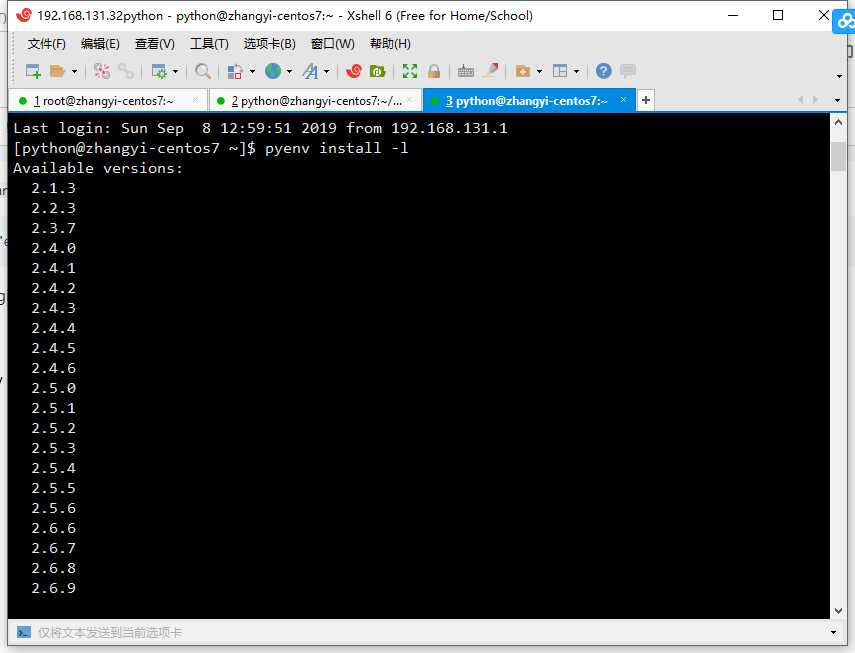
在线安装
[python@zhangyi-centos7 ~]$ pyenv install 3.5.4
Downloading Python-3.5.4.tar.xz...-> https://www.python.org/ftp/python/3.5.4/Python-3.5.4.tar.xz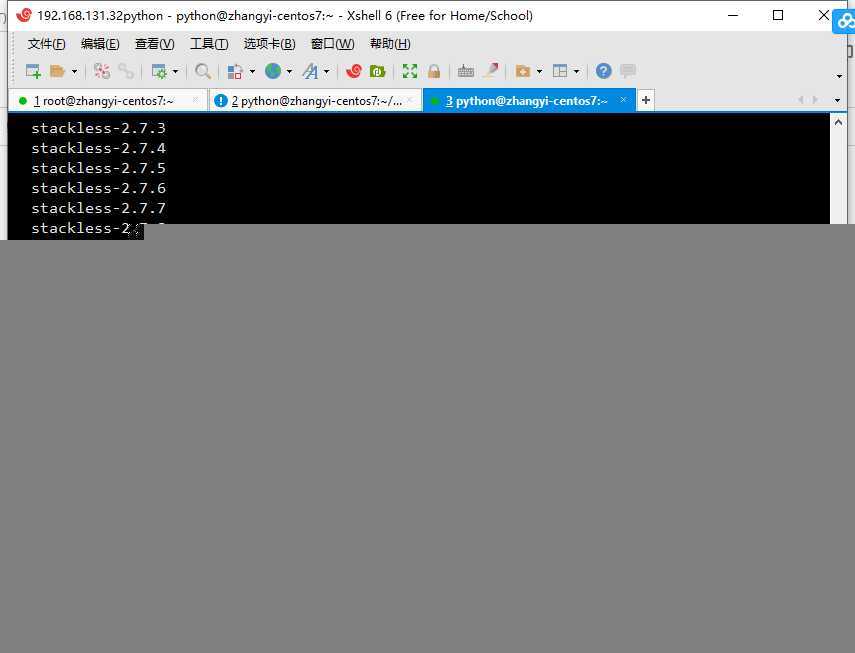
离线安装
两个包都下载好
新建文件夹
makedir -r ~/.pyenv/cache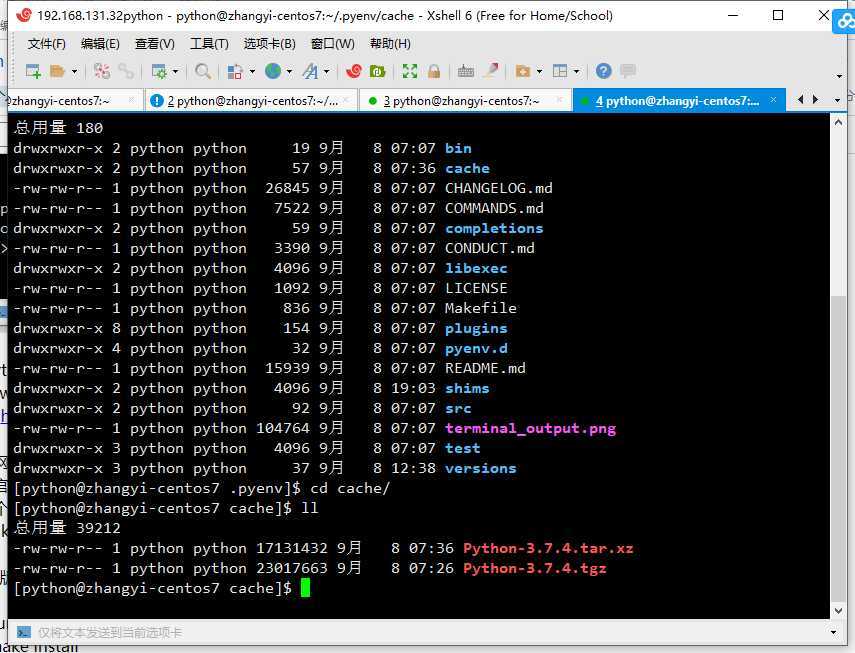
3、3.7版本依赖问题:
3.7版本需要一个新的包libffi-devel,安装此包之后再次进行编译安装即可。
#yum install libffi-devel -y
#make install若在安装前移除了/usr/bin下python的文件链接依赖,此时yum无法正常使用,需要自己下载相关软件包安装,为节省读者时间,放上链接
#wget http://mirror.centos.org/centos/7/os/x86_64/Packages/libffi-devel-3.0.13-18.el7.x86_64.rpm
#rpm -ivh libffi-devel-3.0.13-18.el7.x86_64.rpm安装完成后重新进行make install,结束后再次配置相关文件的软连接即可。
4、使用 pyenv 进行版本隔离
查看已安装的python版本

5、把用户目录下的环境设置成新安装的python版本
pyenv local 3.7.4
6、增加虚拟环境
增加名为zhangyi的虚拟环境
pyenv virtualenv zhangyi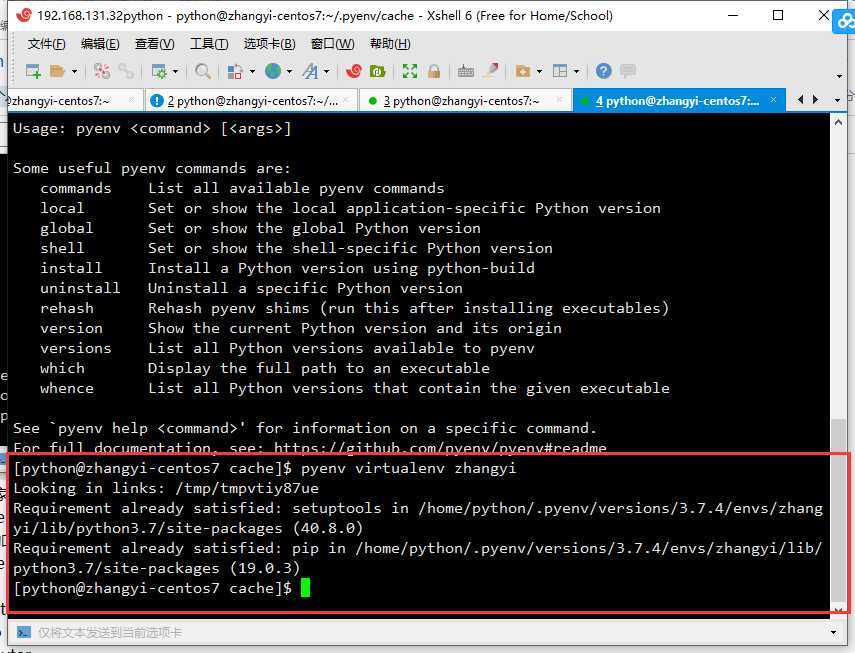
查看虚拟环境

7、安装ipython
切换pip源
Linux系统:
mkdir ~/.pip
cat > ~/.pip/pip.conf 8、安装jupyter
pip install jupyter启动jupyter初始化密码
jupyter notebook passwd
指定jupyter 启动绑定的ip
jupyter notebook --ip=0.0.0.0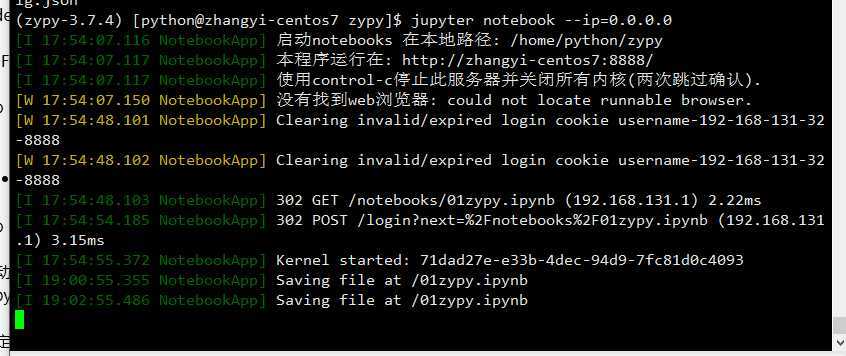
浏览器访问jupyter
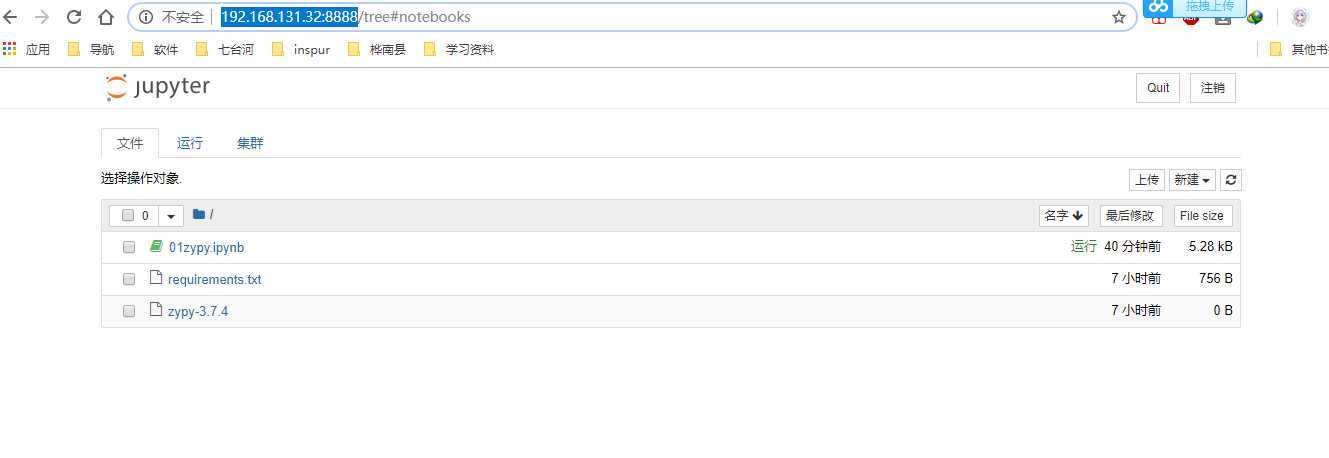
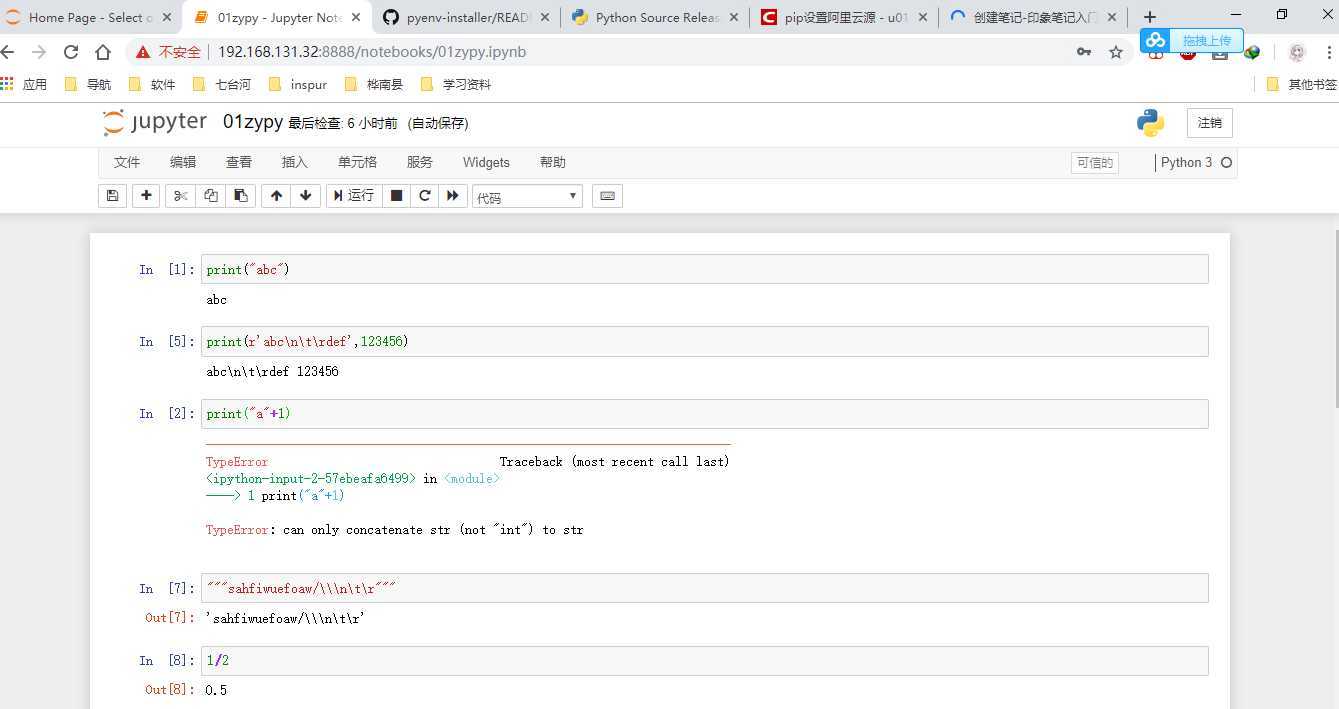
9、Python 虚拟环境包导出
导出包配置文件
导入包配置文件